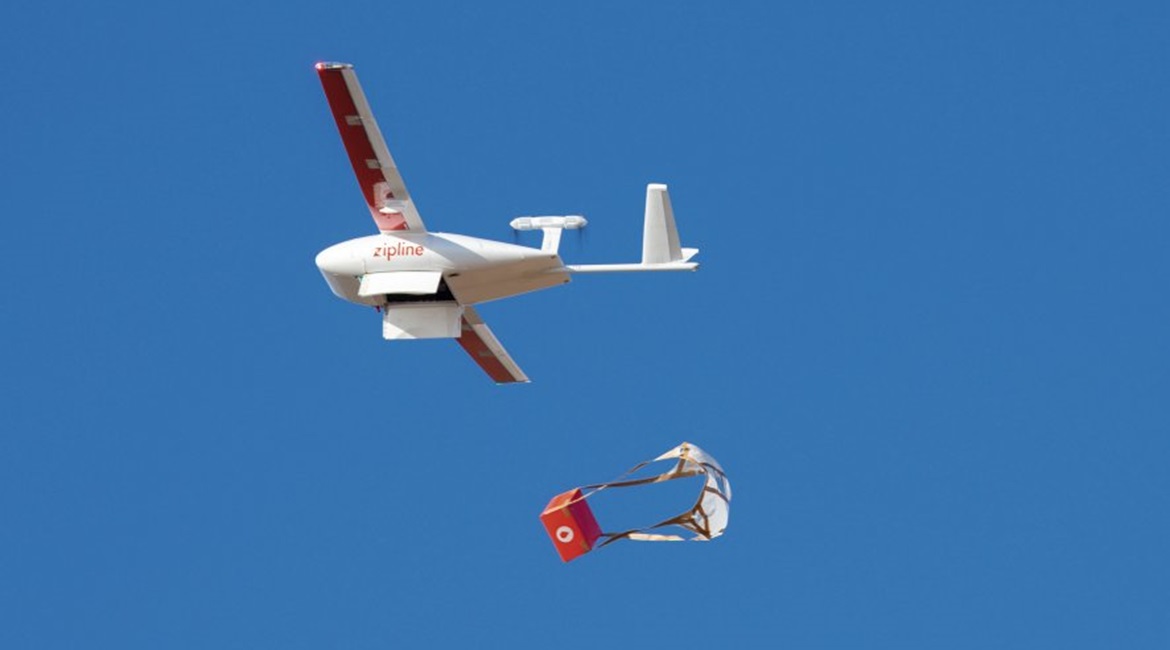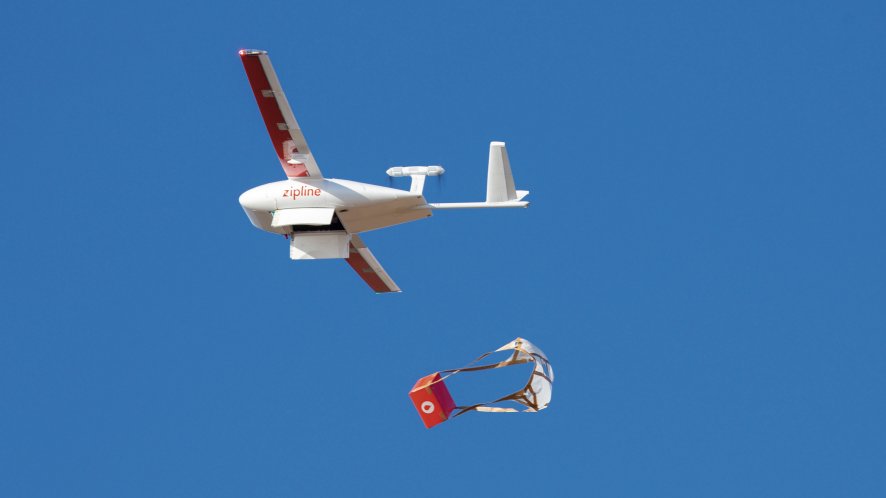
Australian and US armed forces have evaluated an autonomous airborne delivery system capable of distributing medical supplies to forward-deployed units.
The US Marine Corps (USMC) and Australian Defence Force (ADF) relied upon Zipline’s Drone Delivery Service during a series of four exercises in Australia conducted between 30 July and 5 September.

Zipline’s Drone Delivery Service carries fresh-whole-blood loads inside a specially designed UAV. (Zipline)
Exercises ‘Bundey I’, 'Bundey II’, ‘Crocodile Response’, and ‘Koolendong’ 2019 used rail-launched, fixed-wing unmanned aerial vehicles (UAVs) to deliver medical supplies to forward-deployed units, including fresh whole blood (FWB) and water.
According to a spokesperson for Zipline, the exercise’s goal was to illustrate how a “logistics network of autonomous delivery drones could help transform emergency medicine and critical care in conflict, as well as in humanitarian and disaster relief scenarios”.
Zipline’s Drone Delivery Service was developed in collaboration with the US Defense Innovation Unit (DIU) and Naval Medical Research Center’s Naval Advanced Medical Development (NMRC-NAMD). The company said it demonstrated the capability to complete a 127 km round-trip delivery at speeds of up to 100 km/h.
Throughout the four exercises, “The company made over 400 deliveries, which included mock blood resupplies to forward-deployed Shock Trauma Platoons; responding to simulated mass casualty events; simultaneously responding to emergency delivery requests from three different locations; and delivering 68 kg of cargo in under three hours,” an after-action review by the company disclosed on 22 October.
“The [US] DoD wanted to know if we could rapidly forward deploy, integrate with ground forces, deconflict with military aircraft and our own in real time, operate in a range of conditions, and demonstrate the capacity to swarm aid in mass casualty events,” a company spokesperson told Jane’s
Looking to read the full article?
Gain unlimited access to Janes news and more...




